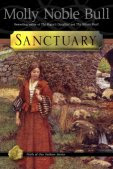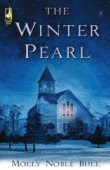Writing Via Dwight Swain
by Molly Noble Bull
Since I don’t know the writing background of those who will be reading these lessons on fiction writing, I am starting at the very beginning. For me, that means Dwight Swain because in my opinion, his book Techniques of the Selling Writer is the best of the best. This lesson is easy, but they will get harder as we move along.
I have included three discussion questions. Please take part in these discussions (My Questions. Your Answers) by commenting on this lesson.
Molly Noble Bull
www.mollynoblebull.com
Questions and Answers
1. What is a story?
Dwight Swain, author of Techniques Of The Selling Writer, (University of Oklahoma Press) says a story is never about anything. Instead, a story is someone's reaction to what happened. A story is how someone deals with danger.
2. What is danger?
Danger in a story is change. When any given situation is altered, the results are a different situation.
Example:
At the beginning of Gone With The Wind, Scarlet had Tara, her land. She thought she also had Ashley. But her situation changed, giving her the goal of trying to get back Tara and Ashley. Events changed her situation, causing her to develop new goals.
3. Why do readers read fiction?
Readers read fiction because it creates a pleasurable state of tension and escape for them.
4. What is reader tension?
Reader tension is the desire to know, immediately, what will happen next to the characters in the story.
5. What is a hook?
A hook is a writing device designed to catch, hold, sustain or pull the reader along from sentence one to the end of the story or book.
6. Why is a beginning hook important in fiction?
When I go into a bookstore to buy a book, I read the first line on page # 1. If the first line pulls me into the story and makes me want to read more, I read the first paragraph. If I like the first paragraph, I read all of page #1, and if I read all of page #1, I buy the book.
Readers want to keep on reading books that begin with a reader hook because it keeps them interested.
1. Example (Strong hook based on an event)
For several minutes he'd been watching her, standing there on the high bridge. Suddenly, she just leaned forward and jumped off into the icy water.
2. Example (Hook based on dialogue)
"Why did you lie to me, Sally?" Tom demanded.
3. Example (Weak hook based on setting)
To the east, the sun pushed its way from behind the rocky mountain, dusting the dawn with orange paint. A chilling wind, whistling down the valley below, but it didn't seem to notice.
My Questions. Your Answers:
A. Why is example one a strong hook? What is it about it that makes you want to read more?
B. Why is example two a strong hook? What is it about it that makes you want to read more?
C. Why is example three a weak hook?
Please send your answers to these questions as a comment to this column. I will announce the names of those that got them all right next week and explain more.
7. What is a plot? .
A plot is the skeleton of a piece of fiction.
8. What is conflict?
In fiction there are always two opposing sides. The two sides war against each other, resulting in conflict for the characters in that story. In a short story, those two sides could be something as simple as Tommy’s wishes as opposed to his mother’s rules. In a novel, conflict could be described as the good guys on one side and the bad guys on the other.
9. How is conflict related to fiction goals?
Each of those opposing sides just mentioned have conflicting goals. For example, the Jones family own land, and their goal are to keep their land. The Browns want the land belonging to the Jones family, and their goal is to take the land away from the Jones family.
10. What is meant by a story’s major conflict?
In fiction, there are often many problems and conflicts, but there is only one major conflict. The major conflict is the one, big problem the two sides are really fighting over. Land was the major conflict between the two families above.
11. How should the reader be informed of the fiction goals mentioned above?
In fiction, the opposing goals of the two sides should be stated clearing in the manuscript by the main character either in the dialogue or in the narrative.
12. What is the difference between a character’s stated goal and a character’s true goal?
A stated goal is what a particular character says that he or she wants. A true goal is what a particular character really wants. The two goals may not always be the same.
Example:
Starlet’s true goal in Gone with the Wind was to keep her plantation, Tara. To Scarlet, Tara represented love and security. However, at first she said she wanted Ashley.
See you again next week.
Molly
Tuesday, March 11, 2008
Subscribe to:
Post Comments (Atom)



2 comments:
Thanks, Molly. This was a great lesson.
Blessings,
Carla
Thanks, Carla. I am glad the lesson helped.
Love,
Molly
Post a Comment